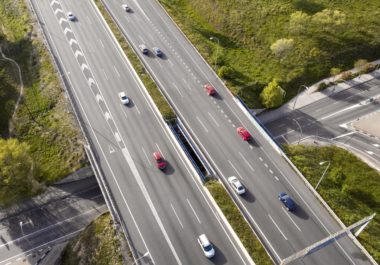09 December 2020
LACROIX City
Although the last five years have seen the emergence of new innovations, it is certainly 2020 that has heralded an unprecedented change in our perception of mobility. Indeed, no fewer than four billion people around the world have had some degree of restrictions imposed on their movement, thus impacting mobility within regions. Beyond transforming the offer itself, these past few months have also had a profound impact on behaviours and attitudes. Did we anticipate it? Certainly not.
On the other hand, in recent years we have been able to restructure our organisation by rethinking our product offering and, in doing so, rethinking smart mobility. The latter has found its place and become firmly rooted in a landscape that is connected, smart and sustainable. Being aware of this, we have been able to reinvent ourselves around new convictions. These are clear: to make mobility sustainable, cost-effective and resilient. This line of thinking, which has been actively pursued at LACROIX City for several years, combined with this complete change to the model that we are currently experiencing, invites us as both public and private stakeholders to think differently about the future of mobility and make it part of a sustainable approach.
While it is still too early to draw any conclusions, the many questions asked all represent opportunities for innovation for the LACROIX City teams. A smart landscape is built not only from sensors but on a vision that is consistent with the needs of citizens. As such, this highly sought-after consistency on the ground reflects what we wanted to embody through the pooling and complementary nature of our areas of expertise (street lighting, signalling, traffic, V2X).
Every crisis is a catalyst for change: this one is impacting our core business and accelerating transformations already underway, designed by our teams and made into a reality on a daily basis with our customers. Let us continue to question our relationship with mobility by rethinking our usual ways of doing things to make the model that we know sustainable, from an equally technological, environmental and social point of view.

More articles

Vision and Off-road Systems

Case study
LACROIX City and Villefranche-sur-Saône Get ready for tomorrow's lighting challenge

Explained
Computer Vision: turning images into information

Great Place to Work® certified

Change of generation: series5X

10,900 sleepers on 35 km of track and over 50 SAE telecontrol devices

Mobile telecontrol case: identify hotspots in the local network

The energy transition needs sustainable infrastructures and people to build them

Matter: everything you need to know about this protocol that could change the connected home industry

Electronic design: why an integrated design center can help you better develop your product

Electronic Design: A Winning Strategy to Accelerate Your Project Development

Explained
Electric mobility and green hydrogen for a sustainable future

Explained
How 5G is revolutionizing the industry of the future?

Detecting wildlife crossings to ensure safety of motorists in Ain aera (France)
Explained
Spain: strengthening our presence in the country by supporting recovery

In short
Alumix at the Elysée Palace!

In short
The LACROIX City ecosystem for smarter mobility

Giving New Meaning to Mobility

Explained
From 2015 to 2020, the development of new markets

Case study
Ensuring Ecological Continuity with the LACROIX City Wildlife Pack: Example of CD 74

Case Study




